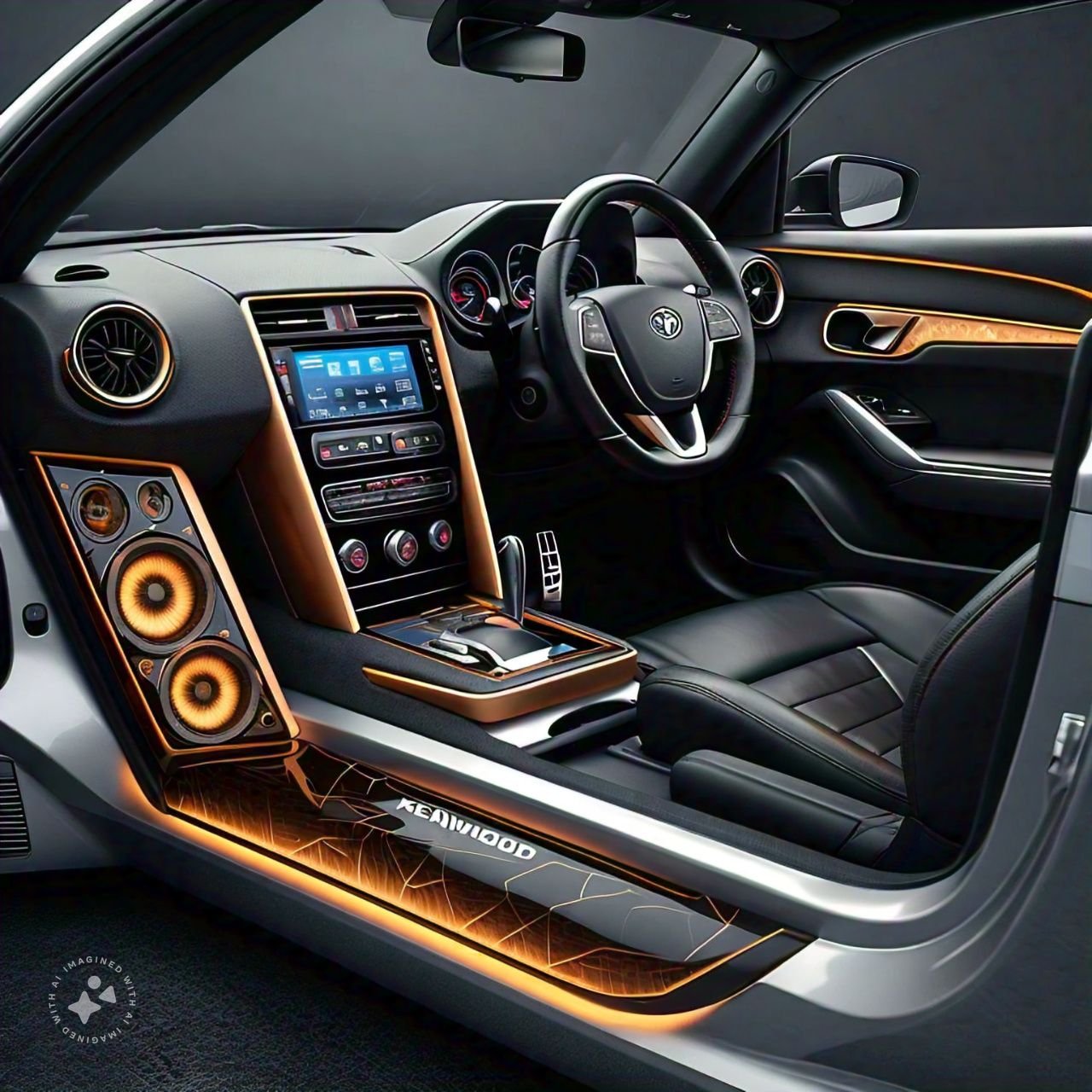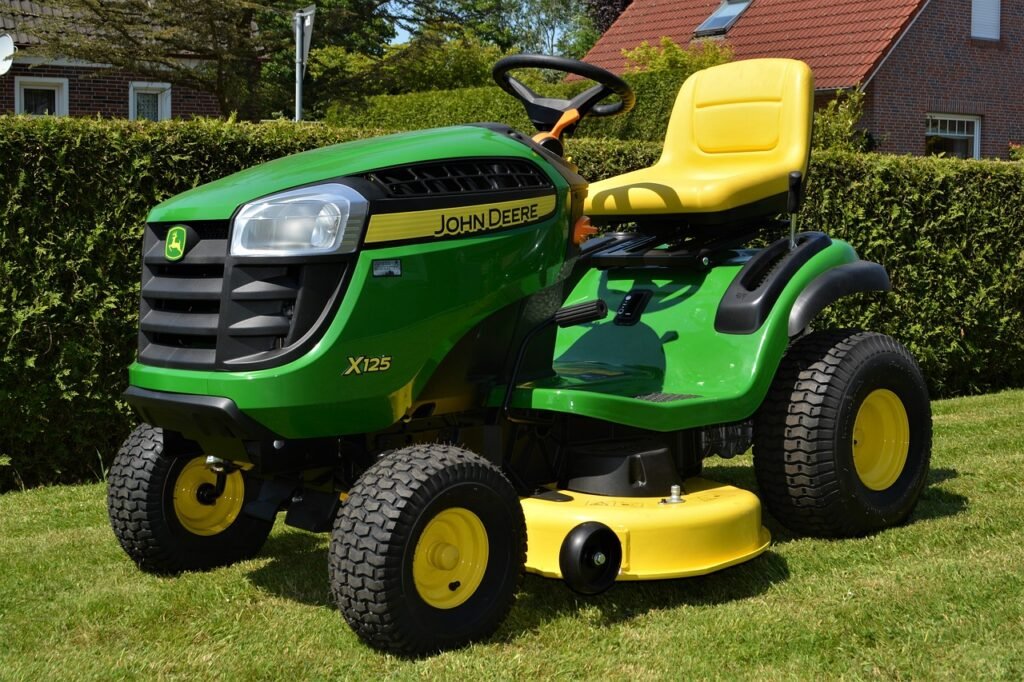When it comes to home comfort and energy efficiency, selecting the right HVAC system is crucial.
Pioneer and Mr. Cool are two prominent names in the HVAC industry, each with a distinct history and market presence.
Both brands have established themselves as reliable providers of heating, ventilation, and air conditioning solutions, catering to a diverse range of customer needs.
Pioneer, a well-regarded name in the HVAC sector, has been delivering high-quality systems for several decades.
Known for their durability and advanced technology.
Pioneer HVAC systems are design to offer robust performance and energy efficiency.
The brand has built a solid reputation for providing reliable and cost-effective solutions, making it a popular choice among homeowners and businesses alike.
On the other hand, Mr. Cool has garnered significant attention for its innovative approach to HVAC technology.
The company is relatively newer compare to Pioneer but has quickly gained a foothold in the market.
Mr. Cool is particularly note for its user-friendly DIY installation kits.
Which appeal to a growing segment of customers seeking easier and more affordable HVAC solutions.
The brand’s commitment to innovation and customer satisfaction has earned it a loyal customer base.
Understanding the strengths and unique offerings of each brand is essential for making an informed decision.
Whether it’s the tried-and-true reliability of Pioneer or the cutting-edge convenience of Mr.
Cool, choosing the right HVAC system can significantly impact home comfort and energy consumption.
As we delve deeper into the specifics of each brand, this comparison will provide valuable insights to help you decide which HVAC system aligns best with your needs and preferences.
Product Range and Variety
When evaluating HVAC systems, both Pioneer and Mr. Cool offer a diverse array of products tailored to meet varying consumer needs.
Pioneer is well-known for its extensive product range, particularly excelling in mini-split systems.
These systems are available in different capacities and configurations, making them suitable for both residential and commercial applications.
Pioneer’s mini-splits are design to provide efficient cooling and heating solutions.
Featuring advanced technologies such as inverter compressors and high SEER ratings for better energy efficiency.
In contrast, Mr. Cool has garnered attention for its innovative DIY mini-split systems.
These systems are design for easy installation, allowing homeowners to bypass the need for professional installation.
which can a significant cost-saving advantage.
Mr. Cool’s DIY series is a unique offering in the market, setting the brand apart by making HVAC systems more accessible to the average consumer.
Additionally, Mr. Cool offers central air conditioners and heat pumps, with a focus on user-friendly installation and maintenance.
Both brands also provide heat pump systems that cater to various climate needs.
Pioneer’s heat pumps are recognize for their reliability and performance in both heating and cooling modes.
Often integrate into their mini-split systems.
Mr. Cool’s heat pumps, on the other hand, stand out due to their compatibility with smart home systems.
Offering consumers the convenience of remote control and energy management via mobile apps.
Moreover, Pioneer has ventured into the realm of multi-zone mini-split systems.
Allowing users to control the climate in multiple rooms with a single outdoor unit.
This feature is particularly beneficial for larger homes or commercial spaces.
Mr. Cool counters this with their flexible and scalable modular systems.
Which can expand as need, providing tailored solutions for growing needs.
Overall, both Pioneer and Mr. Cool offer a comprehensive range of HVAC systems, each with distinctive features and innovative solutions.
Pioneer’s emphasis on high-efficiency mini-splits and multi-zone systems.
Coupled with Mr. Cool’s user-friendly DIY installations and smart home integrations.
Ensures that consumers have diverse options to choose from depending on their specific requirements and preferences.
Energy Efficiency and Performance
When assessing the energy efficiency and performance of HVAC systems.
It is crucial to consider various metrics such as SEER (Seasonal Energy Efficiency Ratio), EER (Energy Efficiency Ratio), and HSPF (Heating Seasonal Performance Factor).
Both Pioneer and Mr. Cool HVAC systems demonstrate commendable efficiency ratings.
Which are essential for reducing energy consumption and utility bills.
The SEER rating is a measure of the cooling efficiency of air conditioners and heat pumps during a typical cooling season. Pioneer HVAC systems generally boast SEER ratings ranging from 16 to 20, denoting high efficiency. Mr. Cool systems, on the other hand, also feature competitive SEER ratings, often between 15 and 21, making them a viable option for energy-conscious consumers. A higher SEER rating not only signifies better energy efficiency but also translates to lower operational costs over time.
In addition to SEER, the EER rating is a critical factor that evaluates the efficiency of HVAC units at peak cooling times. Pioneer units typically have EER values between 12 and 14, while Mr. Cool units range from 11 to 13. Although these values may seem marginally different, even slight variations can impact overall performance, especially in regions with extreme temperatures.
The HSPF rating, pertinent to heat pumps, measures heating efficiency over an entire heating season. Pioneer heat pumps often exhibit HSPF ratings between 8.5 and 10, indicating robust performance in colder climates. Mr. Cool heat pumps also present strong HSPF ratings, usually in the range of 8 to 9.5, ensuring efficient heating during winter months.
Both Pioneer and Mr. Cool offer several models that meet or exceed ENERGY STAR certification standards. This certification signifies that the products meet strict energy efficiency guidelines set by the U.S. Environmental Protection Agency, providing consumers with assurance of superior energy savings and environmental benefits.
Performance in different climates is another crucial consideration. Pioneer systems are known for their adaptability to diverse climate conditions and are particularly efficient in moderate to hot climates. Mr. Cool systems, with their versatile designs, perform well across various home settings, from small apartments to larger houses, and are especially effective in regions with fluctuating temperatures.
Installation and Maintenance
The installation of HVAC systems is a critical aspect that influences both the initial setup costs and long-term performance. When comparing Pioneer and Mr. Cool systems, several key differences emerge in terms of complexity, required tools, and professional assistance.
Pioneer HVAC systems typically necessitate professional installation due to their intricate setup process. The installation involves precise measurements, electrical wiring, and refrigerant handling, all of which require a professional’s expertise. Standard tools such as a manifold gauge set, vacuum pump, and refrigerant scale are essential. Given this complexity, homeowners often prefer to hire certified technicians to ensure the system is installed correctly and safely.
On the other hand, Mr. Cool has garnered attention for its DIY-friendly approach. The Mr. Cool DIY series is particularly notable for its easy installation, designed with the average homeowner in mind. The system features a pre-charged line set, eliminating the need for refrigerant handling. Basic tools such as a wrench, screwdriver, and level are typically sufficient. This simplicity can significantly reduce installation costs and time, making Mr. Cool an attractive option for those who prefer a hands-on approach.
Maintenance for both Pioneer and Mr. Cool systems is generally straightforward. Regular filter replacement is essential to maintain optimal airflow and efficiency. Pioneer systems often use standard-sized filters, which are readily available and easy to replace. Mr. Cool units, particularly the DIY series, also feature accessible filters that can be replaced without professional help.
System cleaning and troubleshooting common issues like refrigerant leaks or electrical problems are important aspects of HVAC maintenance. Pioneer systems may require professional servicing for more complex issues, whereas Mr. Cool systems are designed with user-friendly diagnostics and support, allowing homeowners to address minor problems independently.

Both brands offer warranties and support services to ensure customer satisfaction. Pioneer typically provides a limited warranty covering parts and compressor, with extended options available through licensed dealers. Mr. Cool offers a comprehensive warranty that includes parts and compressor coverage, with additional support available through their customer service and online resources. These warranties and support services are critical in providing peace of mind and maintaining system performance over time.
When evaluating HVAC systems, cost remains a critical factor for most consumers. Both Pioneer and Mr. Cool offer a range of options catering to different budgets and needs. Let’s delve into the cost comparison of these two brands, considering initial purchase price, installation costs, and long-term operating expenses.
Initial Purchase Price
The initial purchase price of Pioneer HVAC systems typically ranges from $1,000 to $3,500, depending on the model and capacity. In contrast, Mr. Cool systems are slightly more expensive, with prices ranging from $1,500 to $4,000. The higher upfront cost of Mr. Cool systems can be attributed to advanced features such as DIY installation kits and smart home compatibility.
Installation Costs
Installation costs can significantly impact the overall expenditure on an HVAC system. Pioneer systems generally require professional installation, which can add between $500 to $1,500 to the total cost, depending on the complexity of the setup. On the other hand, Mr. Cool systems are designed for easy, do-it-yourself installation, potentially saving homeowners significant labor costs. However, for those who prefer professional installation, it could cost around $500 to $1,200.
Long-Term Operating Costs
Long-term operating costs include energy consumption, maintenance, and repair expenses. Both Pioneer and Mr. Cool systems are known for their energy efficiency, often featuring SEER (Seasonal Energy Efficiency Ratio) ratings above 16. This high efficiency can lead to lower monthly energy bills. Maintenance costs for both brands are relatively low, though Mr. Cool’s DIY nature may lead to additional savings on technician visits. Repair costs are comparable, with both brands offering robust warranties to cover major components.
Financing Options and Incentives
Both Pioneer and Mr. Cool provide financing options to ease the financial burden on consumers. Pioneer offers financing through third-party providers, with flexible terms and competitive interest rates. Mr. Cool also offers financing plans, often featuring 0% interest for qualified buyers. Additionally, both brands may be eligible for rebates or incentives from local utility companies or government programs, further enhancing their value.
In terms of value for money, both Pioneer and Mr. Cool have their strengths. Pioneer is slightly more affordable upfront and is a reliable choice for those who prefer professional installation. Mr. Cool, while more expensive initially, offers the convenience of DIY installation and advanced features, providing significant long-term savings and flexibility.
User Reviews and Satisfaction
Customer feedback and reviews play a crucial role in evaluating HVAC systems. Pioneer and Mr. Cool are no exceptions. Both brands have garnered a significant amount of user feedback, shedding light on their strengths and areas for improvement.
Pioneer HVAC systems are often praised for their reliability and performance. Many users have reported consistent cooling and heating capabilities, even in extreme weather conditions. One common compliment is the system’s energy efficiency, which translates to lower electricity bills for homeowners. However, a few customers have mentioned that the installation process can be somewhat complex, requiring professional assistance to ensure optimal performance.
Noise levels are another aspect where Pioneer receives positive feedback. Users appreciate the quiet operation of the units, which is particularly beneficial for residential settings. Customer service is generally well-regarded, with many customers noting prompt and helpful responses to their inquiries and issues. A testimonial from a satisfied homeowner reads, “Pioneer has exceeded my expectations in terms of both performance and customer support. It’s a reliable system that runs quietly and efficiently.”
Mr. Cool, on the other hand, is lauded for its innovative DIY installation kits. Many users find the installation process straightforward and manageable without professional help, which is a significant cost-saving feature. Performance-wise, Mr. Cool units receive favorable reviews for their robust cooling and heating capabilities. However, some users have raised concerns about the durability of certain components, suggesting that the system may require occasional maintenance or part replacements.
Noise levels for Mr. Cool systems are generally acceptable, though a few users have reported higher-than-expected operational noise. Customer service feedback is mixed; while some users have had positive experiences, others have found responses to be slow or unhelpful. A case study from a DIY enthusiast states, “Mr. Cool’s installation was a breeze, and the performance has been solid. However, I did encounter a minor issue with one component, and customer service took longer than expected to resolve it.”
In summary, both Pioneer and Mr. Cool have their distinct advantages and minor drawbacks. Pioneer excels in reliability, performance, and quiet operation, while Mr. Cool stands out for its user-friendly installation and cost efficiency. Customer service experiences vary for both brands, making it essential for potential buyers to consider their specific needs and preferences when choosing an HVAC system.
Technology and Innovation
In the rapidly evolving field of HVAC systems, technological advancements and innovative features are pivotal in enhancing user experience and operational efficiency. Pioneer and Mr. Cool are at the forefront of this trend, offering a myriad of cutting-edge technologies that cater to contemporary needs.
Pioneer has integrated several advanced features into its HVAC systems, including smart home compatibility. Their units can seamlessly connect with popular smart home ecosystems like Amazon Alexa and Google Home, allowing users to control their HVAC settings through voice commands or mobile apps. This integration not only provides convenience but also enables users to optimize their energy usage by adjusting settings remotely.
Additionally, Pioneer systems are equipped with advanced sensors that monitor indoor conditions in real-time. These sensors adjust the system’s performance to maintain optimal comfort levels, thereby reducing energy consumption and enhancing overall efficiency. Eco-friendly refrigerants and energy-efficient compressors are also standard in Pioneer’s lineup, reflecting their commitment to sustainable technology.
Mr. Cool, on the other hand, has made significant strides in user-centric innovations. Their HVAC systems come with DIY-friendly installation features, making it easier for users to set up their own units without professional assistance. This is particularly beneficial for homeowners looking for cost-effective solutions.
Mr. Cool also offers robust remote control options via Wi-Fi connectivity. Users can manage their systems through dedicated mobile apps, providing the flexibility to adjust settings from anywhere. Their units are equipped with sophisticated sensors that detect temperature fluctuations and adjust airflow and cooling intensity accordingly, ensuring consistent comfort.
Both Pioneer and Mr. Cool emphasize eco-friendly technologies. Mr. Cool’s systems utilize environmentally safe refrigerants and energy-efficient components, aligning with global sustainability goals. These innovations not only reduce the environmental impact but also contribute to long-term cost savings for users.
In conclusion, both Pioneer and Mr. Cool have leveraged technology and innovation to create HVAC systems that offer enhanced user experience and improved efficiency. Their commitment to smart home integration, remote control options, advanced sensors, and eco-friendly technologies ensures they remain competitive in the modern HVAC market.
Conclusion: Which Brand is Right for You?
After thorough consideration of the comparative analysis between Pioneer and Mr. Cool HVAC systems, it is evident that both brands present unique advantages tailored to different consumer needs. Pioneer HVAC systems are recognized for their reliability and robust performance, making them an ideal choice for consumers seeking long-term durability and consistent functionality. Their extensive product range caters to various residential and commercial applications, ensuring that there is a suitable solution for diverse environmental conditions.
On the other hand, Mr. Cool stands out with its innovative DIY installation features, making it particularly appealing to homeowners who prefer a hands-on approach and cost-effective solutions. The ease of installation, coupled with the brand’s energy-efficient models, makes Mr. Cool a compelling option for those looking to minimize both initial investment and operational costs.
When deciding between Pioneer and Mr. Cool, it is crucial to assess your specific requirements, including the size of the space to be cooled or heated, the level of technical expertise available for installation, and the long-term maintenance needs. Budget constraints also play a significant role; while Pioneer may require a higher upfront investment, its reliability could lead to lower maintenance costs over time. Conversely, Mr. Cool offers a more affordable initial cost with the added benefit of reduced professional installation expenses.
Ultimately, the choice between Pioneer and Mr. Cool will depend on your personal preferences and specific circumstances. If you prioritize robust performance and long-term reliability, Pioneer may be the better fit. However, if ease of installation and cost savings are at the forefront of your decision-making process, Mr. Cool presents a highly viable alternative. By carefully weighing these factors, you can ensure that your selection aligns with your individual needs and delivers optimal comfort and efficiency for your environment.


